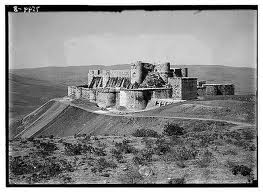Month: April 2013
When I began my writing adventure, I didn’t know what I didn’t know. (The same can be said of life at birth—not a bad analogy.) My manuscript cowered in my computer for a year until my grown children repeated someone’s speeches about trying new things. Primarily to get the kids to leave me alone, I began a slow assault on publishing, leaving a trail of breadcrumbs I share with you now.

- Locate agents who’ll accept an unpublished author. This is a much harder task than I expected. While publishers won’t look at you 99 times in 100 without an agent, agents won’t talk with you if you’re unpublished. The good news is I had a short list. The bad news is the market is flooded.
- Invest in a professional edit. One of three agents gracious enough to e-mail me recommended this step, and I braced for the assault I received. It was ugly. It was demoralizing. It was critical to the rest of my story. Related to this, if you’re not a trained writer (journalism or English degree, preferably with work experience in related fields), then attend classes at your local institution. Unfortunately, enjoying high-school English probably isn’t enough.
- Join credible author groups. For me, Rocky Mountain Fiction Writers (http://bit.ly/bVlYc3) and American Christian Fiction Writers (http://bit.ly/xSemvf) were good fits. I located agents and editors through these organizations, and found a conference that led to agent representation. These types of groups link to other groups and journeyman training opportunities (such as the Christian Writers’ Guild—http://bit.ly/gp7hb—with classes for every level of ability).
- Attend conferences and seminars whenever possible. This is key. Not only do you meet other authors at these gatherings, but agents and acquisitions editors. You find opportunities to pitch your manuscript, dazzling professionals with your work. (For the agents’ perspective, see this article: http://buff.ly/17oYIlR.)
- Be ready to respond with a complete work. Less than three days after returning from a conference, one of America’s top publishers asked for my first manuscript. Their request provided the credibility for a top-tier literary agency to sign me. But a week before the conference, my inbox was FLOODED by fellow attendees panicking because they made appointments with editors and agents requiring a complete manuscript, and their work was unfinished. Could they appear less professional? I don’t think so. Play by the rules or graciously leave that slot for someone who meets the criteria.
I’m completing my third manuscript now, and my agent is shopping the three-book proposal to numerous major publishers who requested it. I’ve been fortunate to get good advice, and hope this blog helps you on your journey. (Part Two is next week.)
[subscribe2]
When I read about destruction of some most of Syria’s cultural monuments, including six World Heritage Sites, I think of Hitler. The story goes he spared Paris from war’s destruction so it could become a “jewel in the Nazi crown.”
 Somebody needs to share this thinking with the Syrians, fighting a war in which both sides bomb without regard for human life, much less history.
Somebody needs to share this thinking with the Syrians, fighting a war in which both sides bomb without regard for human life, much less history.
“War is good for us…we buy antiquities cheap, and then sell weapons expensively. The rebels need weapons, and antiquities are an easy way to buy them,” says a smuggler profiting from an association of diggers dedicated to fencing loot to fund the revolution against President Bashar Assad. (http://ti.me/PbFM0m) With two dozen heritage museums, hundreds of archaeological sites, and a countrywide self-preservation mindset, the pickings are ample. Has it never occurred to these guys that antiquities aren’t infinite? When they run out, then what?
So what have we lost? I write “we” because Syria is the cradle of civilization, a four-thousand year old gem of Biblical and Islamic sites, Roman cities, and Crusader castles, as well as the oldest continuously inhabited city in the world: Damascus. If we are truly “global,” someone should be asking what Syrians are going to do when bombing stops. The country’s oil reserves are dwindling, and there’s no market for desert sand.

Krak des Chevaliers, the world’s best-preserved Crusader castle, bombed March 2012

Dead cities of Syria, hit by missiles, tanks, and gunfire

Aleppo’s souk, destroyed by fire October 2012
Isn’t tourism the country’s only option? They’re literally burning that industry to the ground. I wonder what’s going to be left to rule when there are no more civilians to kill, and history has been obliterated.
[subscribe2]
(Laurence O’Bryan, international suspense writer of note, asked me to write a guest blog for his website, http://bit.ly/12mQSW1. Flattered as I can be, I share it with you now.)
Last fall, less than seventy-two hours after returning from a writers’ conference accosting acquisitions editors, a Big Six Imprint asked for my first manuscript. Things then slowed considerably when they deemed my heroine “too atypical.” A very fine literary agent now shops the three-book proposal everywhere.
I am a patient woman.
When Laurence graciously asked for a guest blog about this writing adventure (which began with a journalism degree in the eighties, and was honed in marketing and advertising for twenty-five years), I thought immediately of the social media challenge. Writers I know tend to be hermits like myself, so tossing a private soul to public wolves is intimidating and puzzling. What to do?
My epiphany occurred when I realized I was no longer me, but rather the product. I instituted the demographic grinder: who is my market? What are they interested in reading? What are they buying? The NYTimes bestseller list is a good place to begin research, and the recent-release shelf of your local bookstore depicts what publishers are buying. (If you’re not using a professional facebook page, you’re missing a demographic bonanza; the reports are invaluable.)
I questioned my “product.” What is its competitive point of difference? How does it nest uniquely in the marketplace? How can I position it in the best, most engaging light? To answer these, I had to know market and genre, study competition, and analyze accomplishments and topic. Gone are the days when authors are Hemingway catching a marlin with one hand while writing The Old Man and the Sea with the other. Today’s authors have to be aware, educated, and savvy. Businesspeople.
Then I analyzed data and budgeted. What could I do—copy and design—and what did I need to contract? I fearlessly created facebook and twitter pages, and my original website (now being redesigned as my persona evolves). Fortunately, I’m a prolific (if untalented) photographer, so photos colorfully enhanced the initial platform that professionals now take to the next level. I sought input from the most qualified, talented people I could afford.
And I write. Two manuscripts are complete: first professionally edited, second scheduled for edit in July. I’ll finish the third by year’s end. A fourth and fifth lurk in my mind’s dark recesses. Meanwhile, manuscripts and persona mature simultaneously, creating the professional author’s image publishers seek.
I am an optimistic woman.
[subscribe2]
 During Lent (the 46-day season preceding Easter on the Orthodox Christian calendar), churches worldwide recount Christ’s death, Herod’s complacency, Peter’s betrayal, and finally, Christ’s resurrection. I’d say this powerful theology is the cornerstone of my faith.
During Lent (the 46-day season preceding Easter on the Orthodox Christian calendar), churches worldwide recount Christ’s death, Herod’s complacency, Peter’s betrayal, and finally, Christ’s resurrection. I’d say this powerful theology is the cornerstone of my faith.
But did you hear a sermon on the first person to recognize the risen Christ? It wasn’t the local priest or pharisee. Not the youth minister sporting a well-trimmed soul patch. Nor the local magistrate rescinding the death certificate, or paparazzi wanting to make a quick mosaic. According to Luke (my favorite), Mark, and Matthew, Christ appeared to Mary Magdalene — a woman and prostitute, no less — and her friends. John wrote she didn’t recognize Christ (while confirming she was first), and Paul (an easy target for misogyny) told in Corinthians He appeared to Cephas, then Peter.
And here’s a shocker: the women were on their way to the tomb to render service. You know, like the thankless jobs (nursery work and bake sales) they do to keep today’s church running smoothly. Mary Magdalene came to the tomb to anoint Christ’s body with spices, delaying its putrification.
Women were second-class citizens in those times, unable even to testify in court. And yet Christ, whose every move, breath, and thought was significant, chose to appear to them — to us, to you, to me — because His messages are unlimited by gender, race, and creed.
As I’ve written before, Christian women are part of an unbreakable chain anchored to the very foundation of our faith. Our links include Eve (BTW, Adam was standing next to her, mute, in the garden — check the verses in Hebrew); Miriam (Moses’ sister, the prophet); Deborah (Old Testament judge, warrior, and advisor to kings); Dorcas (church-builder); Junia (disciple whose feminine name scholars now believe was changed to the masculine, Junius); and the disciple Phillip’s four daughters (prophets all).
Claim your heritage! Educate your daughters. Hold your pastor accountable for preaching inclusively when supported by Biblical data. And live vigorously and joyfully as representatives of Christ, daughters of God.
Christ is risen! Hallelujah!
[subscribe2]





